Transform Your Life with Expert Jaw Surgery in Turkey 🇹🇷
Correct jaw misalignment, enhance facial harmony, and improve your overall health — all with world-class surgical care at Pera Clinic



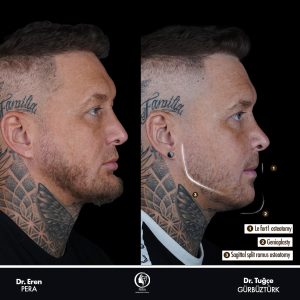
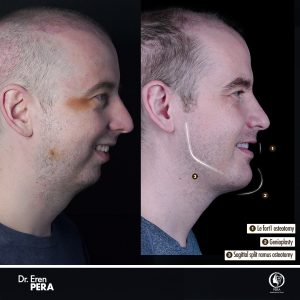

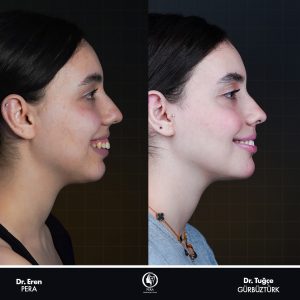
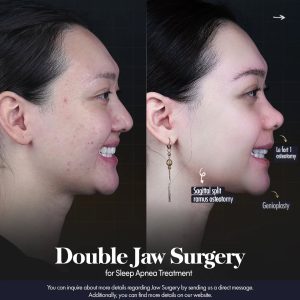
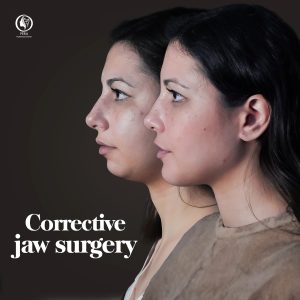
Correct jaw misalignment, enhance facial harmony, and improve your overall health — all with world-class surgical care at Pera Clinic









About Us
At Pera Clinic, we specialize in advanced facial and dental treatments, working in partnership with Hospitaprime, a well-established name in Turkey’s health tourism industry. With years of expertise, cutting-edge technology, and a focus on patient safety, we deliver natural, functional, and long-lasting results.
Also known as orthognathic surgery or double jaw surgery, this advanced procedure corrects irregularities in the upper and lower jaw. It’s not just a cosmetic solution — it significantly improves function, comfort, and facial symmetry.
Jaw surgery may be recommended for patients who experience:
Doctors


Dr. Eren Pera, DDS, MSc, is a preeminent Dentist and Oral and Maxillofacial Surgeon who has garnered significant experience in dental implantology, zygomatic implants, orthognathic surgery, TMJ surgery, and facial aesthetics throughout his impressive career. Dr. Eren Pera, a renowned maxillofacial surgeon, is revolutionizing dental care with his profound expertise. Known worldwide as one of the leading experts in jaw surgery, his cutting-edge techniques and use of latest technologies ensure superior results for all patients. Furthermore, he regularly imparts his wisdom by training doctors from across the globe, a testament to his authority in the field.


Dr. Tugce Gurbuzturk is a highly skilled Dentist and Orthodontist with a proven track record in Orthodontic treatment for orthognathic surgery and Orthodontic treatment with Invisalign. Dr. Gurbuzturk commenced her academic journey at Hacettepe University Faculty of Dentistry in Ankara, where she spent five years, from 2016 to 2021, immersing herself in the study of dentistry. Her growing interest in orthodontics motivated her to specialize further in the field, leading her to the prestigious Okan University Faculty of Dentistry in Istanbul in 2022, where she is currently honing her skills.
Comfortable 4 or 5-star accommodation near the clinic, included in your treatment package.
Private car service for airport pick-up, hotel drop-off, and clinic visits.
Multilingual support to guide you throughout your journey in Turkey.
Continued care and communication after surgery to ensure proper healing and satisfaction.
All necessary reports, scans, and documents for your records or follow-up with your home doctor.
Full itinerary planning: from the consultation to the recovery day — so you can travel with confidence.
Testimonials
Fantastic Dentist – So Caring and Professional!
A friend recommended this clinic to me, and I’m so glad they did. Everyone here is incredibly kind, professional, and genuinely cares about their patients.
Gabriela Capuano
I am very grateful to have crossed paths with Dr Eren Pera and Hospitaprime. I had 4 implants badly applied at a previous clinic, and Dr Eren changed them for me. They had already become infected but he saved my gums by using proper materials.
Paul-Adrian Cojocariu
I am nearly 4 weeks post op double jaw surgery with dr Eren, my experience has been amazing I have had no issues and my surgery went well, hospita prime is very professional and friendly, to anyone who is thinking about having jaw surgery and is scared, hospita prime is for you
Mrs Jemma Penders
Patients who visit our clinic for orthognathic concerns first undergo detailed imaging using tomography, including cephalometric, panoramic, and 3D scans to evaluate the skeletal and dental structures. Based on these diagnostic images, a personalized treatment plan is developed in collaboration with specialists in oral diagnosis, orthodontics, and maxillofacial surgery.
For surgical planning, we utilize AI-supported software to perform profile and skull base analysis, allowing us to determine the optimal jaw positions. An intraoral scanner is also used to capture precise digital impressions of the teeth. Based on this data, we choose between a “Surgery First” or “Early Surgery” approach.
With AI guidance, we digitally reposition the jaws and generate a custom surgical guide to ensure precision during the operation. The surgery is then performed under general anesthesia by our experienced maxillofacial surgeons.
At our clinic, we often recommend the Surgery First method, as it immediately improves facial profile and jaw alignment. Orthodontic treatment — typically with Invisalign — follows the procedure. In cases of severe dental crowding, Invisalign may be started for 3–4 months before surgery to align the teeth partially, followed by corrective jaw surgery.
Before undergoing orthognathic surgery using the Surgery First approach, patients go through a focused pre-surgical phase led by an experienced Oral and Maxillofacial Surgeon. Unlike conventional methods that require extended pre-surgical orthodontic treatment, the Surgery First technique eliminates this waiting period by addressing the skeletal structure upfront.
In this preparatory stage, we perform precise treatment planning using advanced imaging technologies such as 3D tomography, along with AI-based simulations to visualize the expected surgical outcome. This allows both the medical team and the patient to clearly understand the anatomical corrections and aesthetic improvements anticipated.
Additionally, patients undergo comprehensive medical assessments to confirm their suitability for surgery. This phase also includes in-depth consultations covering the procedure details, associated risks, expected benefits, and the need for post-operative orthodontics. By prioritizing skeletal correction first, we reduce treatment time and help patients achieve functional and aesthetic improvements more efficiently.
Recovery following orthognathic surgery using the Surgery First approach is typically more streamlined and patient-centered. Because the primary skeletal adjustments are performed at the outset, patients often experience immediate enhancements in both facial aesthetics and jaw function.
The full recovery period generally spans six months to one year, depending on individual healing factors. Post-operative discomfort is managed effectively with medications and treatments provided during the hospital stay. In the initial days, patients are placed on a pulp-free liquid diet, carefully planned by the medical team to support healing.
In some cases, intermaxillary elastics (rubber bands) may be prescribed to guide jaw positioning during recovery. These are applied in a way that supports function and alignment without completely restricting oral movement.
Patients with non-physically demanding jobs can typically return to work within approximately one week following surgery. However, those engaged in physically intensive occupations may require a longer recovery period — usually two to three weeks — before resuming their duties, depending on their individual healing progress and the nature of their work.
The duration of orthognathic surgery — particularly with the Surgery First approach — varies based on the complexity of each case, but it is generally shorter than traditional treatment timelines. The surgical procedure itself, performed under general anesthesia, typically lasts 3 to 4 hours and focuses on repositioning the jaws for optimal function and aesthetics.
Thanks to AI-assisted imaging and advanced surgical planning tools, we are able to streamline the process and minimize time in the operating room.
Post-surgery, the initial recovery phase spans a few weeks, during which patients begin to see noticeable improvements in facial harmony and jaw function.
After the surgery, patients typically begin the orthodontic phase, which focuses on fine-tuning the alignment of the teeth in harmony with the newly repositioned jaw. This stage usually lasts 6 months to one year, depending on the complexity of each case. Compared to traditional orthognathic surgery — where pre-surgical orthodontics alone can take a year or more — the Surgery First approach significantly shortens the total treatment time. In many cases, the entire process from surgery to the end of orthodontic care can be completed within 2 months to one year, making it a more efficient and patient-centered approach.
At Pera Clinic, the full treatment journey is carefully planned for international patients.
🗓️ Day 1: Arrival and medical imaging
🗓️ Day 2: Consultation and detailed treatment planning
🗓️ Day 3: Surgery (lasting approximately 3–4 hours)
Patients typically stay in Istanbul for about 10 days, which includes surgery and early recovery. In select cases where dental occlusion is ideal post-surgery, orthodontic treatment may not even be necessary.
Yes, orthognathic surgery provides a permanent correction for jaw misalignment. The results are designed to be long-lasting, as the procedure involves repositioning the jaw bones themselves. In some cases, additional treatments or post-surgical measures — such as orthodontics or retainers — may be recommended to help maintain and enhance the long-term stability of the outcome.
Some discomfort and pain are expected after orthognathic surgery, particularly during the initial recovery period. However, this pain is effectively managed with prescribed medications and postoperative care, ensuring the patient’s comfort as healing progresses.
Orthognathic surgery may be necessary for individuals with jaw misalignments or skeletal disorders that affect daily functions such as eating, speaking, breathing, and chewing. These conditions can also impact facial aesthetics and overall quality of life. Correcting the jaw structure through surgery not only improves appearance but also restores proper function and long-term oral health.
The appropriate age for orthognathic (jaw) surgery depends on the severity of the skeletal disorder and the patient’s stage of bone development. In general, surgery is recommended after the completion of puberty, once jaw growth has stabilized — typically after age 17 in males and after age 18 in females.
However, in cases of severe jaw asymmetry, underbite, or overbite, younger patients may still be eligible for surgery if the condition significantly affects function or appearance. In such cases, early intervention may be advised.
At our clinic, we follow a personalized approach for each patient, carefully assessing developmental stages and clinical needs to ensure that the timing and method of treatment are both effective and safe, particularly for younger individuals.
Yes, orthognathic (jaw) surgery is considered a permanent solution for correcting jaw misalignment. The procedure involves making precise cuts in the jawbone, repositioning it to the ideal anatomical alignment, and then securing it with titanium plates and screws to ensure long-term stability.
Once the bones have fully healed, the results are typically lifelong. This structural correction not only improves function and aesthetics but also eliminates the need for repeated interventions, allowing patients to benefit from the outcome for many years to come.
One of the key advantages of orthognathic surgery is that it leaves no visible scars. The entire procedure is performed intraorally, meaning all incisions are made inside the mouth, eliminating the need for any external cuts on the face.
These internal incisions are made in the gum tissue and heal naturally over time, typically without leaving any noticeable marks — not even inside the mouth. This approach ensures both aesthetic preservation and a more discreet recovery process.